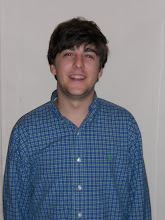Reading Response #2 (from when I got snowed-in, in Greensboro):
1. While Brakhage’s Reflections on Black is a trance film, why does Sitney argue that it anticipates the lyrical film?
a. Sitney argues this because unlike the usual trance film, Brakhage is concerned with the subjective experience of the individual character.
2. What are the key characteristics of the lyrical film (the first example of which was Anticipation of the Night).
a. The camera depicts the subject/protagonist/filmmaker’s eye/subjective point of view
3. Which filmmaker was highly influential on Brakhage’s move to lyrical film in terms of film style, and why?
a. Menken because she focused on observation and camera movement as metaphors
4. What does Sitney mean by "hard" and "soft" montage? What examples of each does he give from Anticipation of the Night? {Tricky question; read the entire passage very carefully.]
a. Hard montage is a bunch of images juxtaposed in rapid succession and the subject matter or images conflict. Soft montage is the more traditional idea of montage to link images and ideas together.
5. What are the characteristics of vision according to Brakhage’s revival of the Romantic dialectics of sight and imagination? [I’m not asking here about film style, I’m asking about Brakhage’s views about vision.]
a. Brakhage sought to break the preconceived ideas of vision that we ignore each day. He wanted to capture the entire process of vision, even capture what it looks like when your eyes are closed but bright sunlight shines on them. Brakhage seeks to define vision as much more than just what we see.
Sitney, “Major Mythopoeia”
6. Why does Sitney argue, “It was Brakhage, of all the major American avant-garde filmmakers, who first embraced the formal directives and verbal aesthetics of Abstract Expressionism.”
a. Because Brakhage scratched and painted/dyed film stocks. Sitney compares Brakhage to Pollack, saying that he film to express himself in the same way that Pollack exlpored paint.
7. What archetypes are significant motifs in Dog Star Man, and which writers in what movement are associated with these four states of existence?
a. Vivid experience of a child, transition of innocence into sexual frustation and desire, man vs nature, and redemption. Romantic writers such as William Blake are associated with similar states (especially experience and innocence).
Sitney, "The Potted Psalm"
[This is an addition to the syllabus. After reading the introductory paragraphs, focus on the discussions of The Cage and Entr'acte (p. 47-54 and The Lead Shoes (p. 68-70).]
8. According to Sitney, what stylistic techniques are used to mark perspective and subjectivity in The Cage, and why is this an important development in the American avant-garde film?
a. The camera movement; it rolls around and takes on the point of view of a runaway human eye. This point of view shot took film in the direction of exploring different perspectives via camera movement.
9. For Sitney, what are the key similarities and differences between Entr'acte and The Cage?
a. Violence, chase scenes, and subjective camera movement. The Cage is a more serious film than Entr’acte.
10. How does Peterson synthesize the seemingly incongruent suggestions of his Workshop 20 students into The Lead Shoes?
a. He listened to everyone’s feedback and allowed himself to be comfortable with structured chaos.

No comments:
Post a Comment